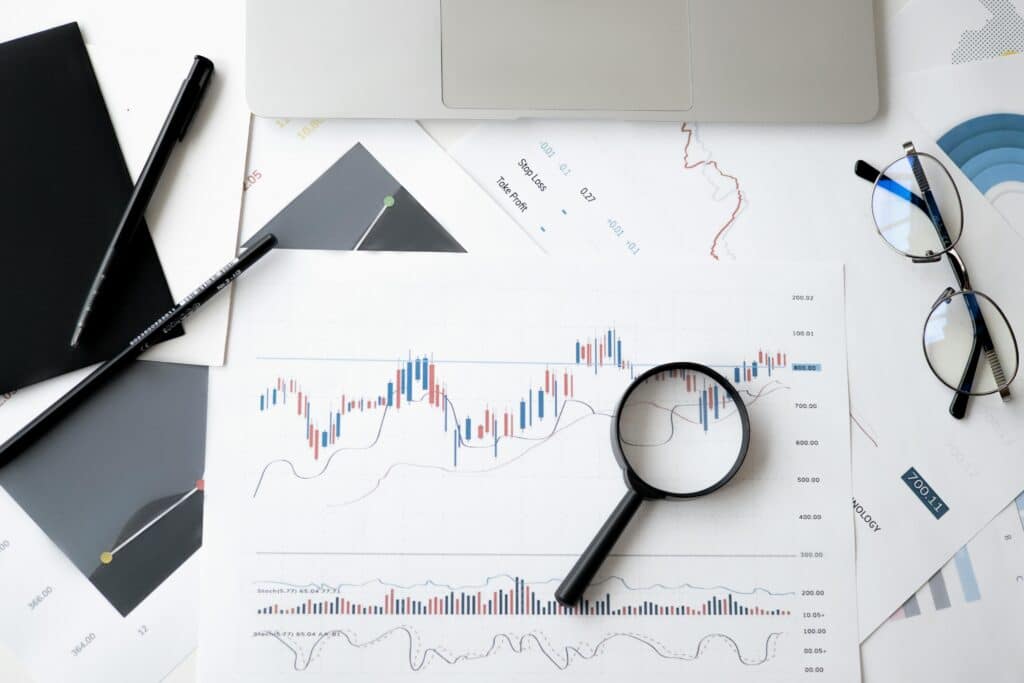In today’s data-driven world, predictive analytics is revolutionizing the way industries forecast trends, improve operational efficiency, and make more informed decisions. Powered by artificial intelligence (AI), machine learning, and advanced data analytics, predictive analytics allows businesses to anticipate future events by analyzing historical data patterns. This powerful tool enables organizations to stay ahead of the competition, optimize processes, and mitigate potential risks.
In this article, we will explore the key aspects of predictive analytics, including how it works in conjunction with AI, the industries benefiting from it, real-world examples of its application, and the challenges businesses face in adopting this transformative technology.
What is Predictive Analytics, and How It Works in AI?
Predictive analytics refers to the use of statistical techniques and machine learning algorithms to analyze historical data and predict future outcomes. By identifying patterns in large datasets, businesses can make forecasts about customer behavior, market trends, and operational performance. AI-powered predictive models continually learn from new data, improving their accuracy and ability to anticipate future events over time.
At the heart of predictive analytics is AI, which enhances its capabilities by automating the process of data analysis and refining the predictions. Artificial intelligence uses algorithms that mimic human cognitive functions, allowing machines to process vast amounts of data quickly and accurately. Machine learning models, a subset of AI, train themselves on historical data and adapt to new information, making them more effective at forecasting trends and identifying risks.
The integration of AI with predictive analytics involves several steps:
1. Data Collection: Data from various sources, including data warehousing, IoT data integration, and big data, is collected and stored for analysis.
2. Data Mining: Through data mining techniques, AI systems sift through the data to identify relevant patterns and trends.
3. Modeling: Machine learning algorithms build predictive models based on these patterns, learning from historical data to make future predictions.
4. Prediction: The AI-powered models make predictions about future events, such as customer preferences, equipment failures, or financial market fluctuations.
5. Feedback Loop: The system uses feedback from new data to continuously improve its predictions, making the models more accurate over time.
Key Industries Benefiting from Predictive Analytics Powered by AI
Many industries are leveraging predictive analytics to drive innovation, improve efficiency, and stay competitive. The integration of AI with predictive models has been particularly transformative in the following sectors:
1. Healthcare
In healthcare, predictive analytics is helping providers anticipate patient outcomes, optimize treatment plans, and manage healthcare resources more effectively. By analyzing medical histories, lab results, and patient behavior, AI-powered models can predict which patients are at risk of developing chronic conditions, allowing healthcare providers to offer preventive care. For example, predictive models are being used to forecast hospital readmission rates, enabling hospitals to allocate resources more efficiently.
2. Retail
In the retail sector, predictive analytics is being used to forecast customer demand, optimize inventory management, and personalize marketing strategies. Retailers analyze data from customer purchases, online behavior, and AI chat interactions to predict future buying trends. AI chatbots further enhance customer engagement by offering personalized product recommendations based on historical shopping data and sentiment analysis of customer interactions.
3. Finance
The financial industry relies heavily on predictive analytics for risk management, fraud detection, and investment forecasting. AI-powered predictive models analyze market data, financial transactions, and economic indicators to predict stock market trends, assess credit risks, and identify fraudulent activities. Financial institutions use these insights to make informed investment decisions, manage risks, and enhance regulatory compliance.
4. Manufacturing
In manufacturing, predictive analytics is transforming operations by predicting equipment failures, optimizing production schedules, and improving supply chain management. AI systems analyze data from IoT devices, such as sensors on machinery, to predict when equipment is likely to fail. This allows businesses to perform maintenance before breakdowns occur, reducing downtime and improving overall productivity.
5. Security and Surveillance
In the security industry, predictive analytics and facial recognition are used to enhance public safety and prevent security breaches. AI-powered models analyze video footage from computer vision systems to identify suspicious behavior and predict potential threats. AI detection systems also help security teams prevent unauthorized access to restricted areas and enhance risk management protocols.
How AI Improves Forecasting Accuracy
The integration of AI into predictive analytics significantly improves forecasting accuracy by automating the analysis of complex datasets and continuously refining predictions. AI and machine learning models are capable of processing vast amounts of data in real-time, identifying hidden patterns that may not be apparent through traditional analysis methods.
1. Real-Time Data Analysis
One of the key advantages of AI is its ability to analyze data in real-time. Businesses can use AI-powered predictive analytics to respond to changes in market conditions or customer behavior as they happen. For example, retailers can adjust their inventory levels based on real-time purchasing trends, while financial institutions can detect unusual transaction patterns that may indicate fraud.
2. Handling Big Data
Traditional data analysis methods struggle to process the sheer volume of data generated by modern businesses. However, AI excels at handling big data from various sources, including data warehousing, social media, and IoT devices. By analyzing this data, AI models can make more accurate predictions about future trends, customer preferences, and operational performance.
3. Improving Model Accuracy with Feedback Loops
Machine learning models used in predictive analytics are constantly learning and improving. As new data becomes available, these models use feedback loops to refine their predictions and improve accuracy. For instance, an AI chatbot can use customer feedback to adjust its recommendations, making future interactions more personalized and effective.
Real-World Examples of Predictive Analytics in Action
Several businesses have already harnessed the power of AI-powered predictive analytics to improve their operations and gain a competitive edge. Here are a few real-world examples of how this technology is being applied across different industries:
1. Amazon’s Predictive Shipping
Amazon, a leader in the retail industry, uses predictive analytics to anticipate customer demand and optimize its supply chain. By analyzing purchase history, browsing behavior, and regional trends, Amazon can predict which products are likely to be ordered in specific geographic areas. This enables the company to pre-ship items to distribution centers closer to customers, reducing delivery times and improving customer satisfaction.
2. Netflix’s Content Recommendations
Netflix uses predictive analytics and AI-powered algorithms to recommend content to its users. By analyzing viewing history, user ratings, and engagement patterns, Netflix’s recommendation system predicts what shows or movies a user is likely to enjoy. This personalized content delivery enhances the user experience and increases viewing time on the platform.
3. Predictive Maintenance in Aviation
Airlines are using predictive analytics to monitor aircraft performance and predict maintenance needs. By analyzing data from sensors on aircraft components, AI-powered models can predict when parts are likely to fail and schedule maintenance before a breakdown occurs. This proactive approach reduces maintenance costs, prevents flight delays, and enhances safety.
Challenges in Adopting Predictive Analytics Solutions
While the benefits of predictive analytics are clear, there are several challenges that businesses face when adopting these solutions:
1. Data Quality and Availability
For predictive analytics to be effective, businesses need access to high-quality, accurate, and relevant data. In many cases, organizations struggle with data silos, where information is stored in separate systems that do not communicate with each other. IoT data integration and data warehousing are essential for consolidating data from various sources, but businesses must also ensure that this data is clean, complete, and up-to-date.
2. Complexity of AI Models
Building and maintaining AI-powered predictive models requires specialized knowledge and expertise. Many businesses lack the in-house talent needed to develop and deploy these solutions effectively. Additionally, AI models can be complex and difficult to interpret, making it challenging for decision-makers to understand how predictions are being generated.
3. Privacy and Ethical Concerns
The use of predictive analytics often involves processing large amounts of sensitive data, such as customer information or financial records. Businesses must ensure that they comply with data privacy regulations and protect customer information from breaches. Ethical concerns also arise when AI models are used to make decisions that affect individuals, such as credit approvals or hiring decisions. It is crucial for organizations to implement AI detection systems that ensure fairness and transparency in their AI-powered solutions.
Conclusion
Predictive analytics, powered by AI and machine learning, is reshaping the future of industries by enabling businesses to make data-driven decisions, optimize operations, and stay ahead of market trends. From healthcare and retail to finance and manufacturing, predictive analytics is transforming how companies forecast demand, manage risk, and enhance customer experiences.
As businesses continue to adopt AI-powered predictive models, they will face challenges such as data quality, model complexity, and privacy concerns. However, with the right strategies and tools, organizations can overcome these obstacles and unlock the full potential of predictive analytics to drive innovation and growth.The future of predictive analytics is bright, and as technology continues to evolve, its impact on industries will only grow. By embracing this powerful tool, businesses can not only predict the future but also shape it in ways that were once unimaginable.













